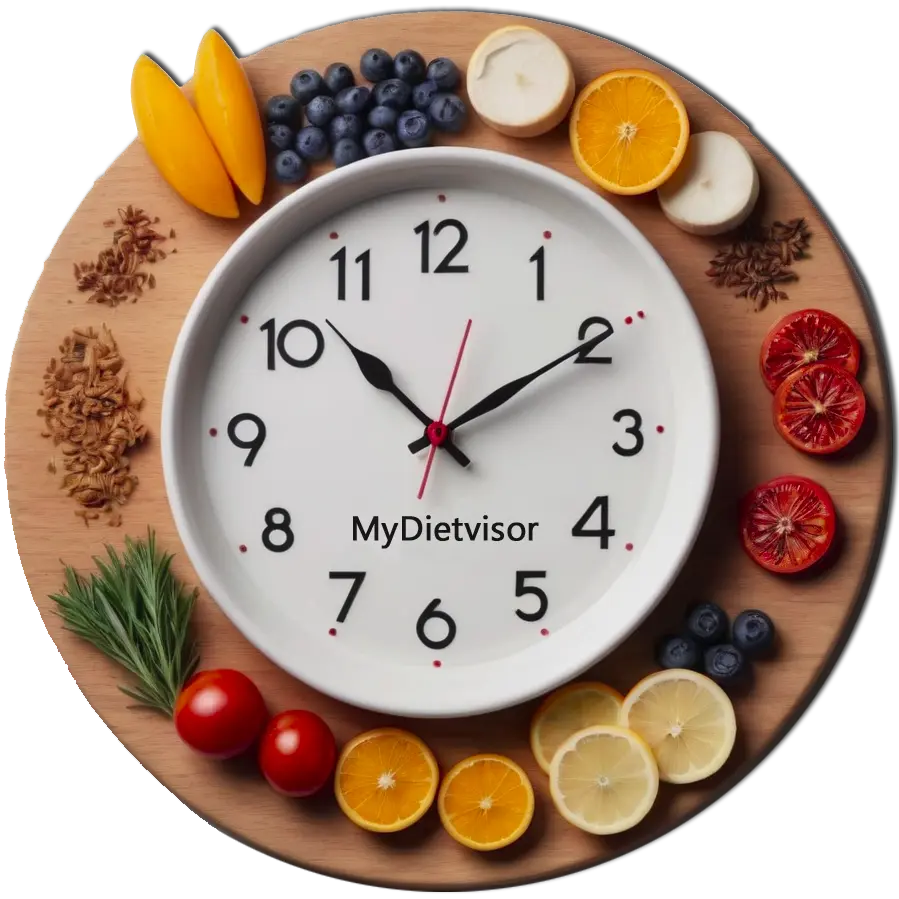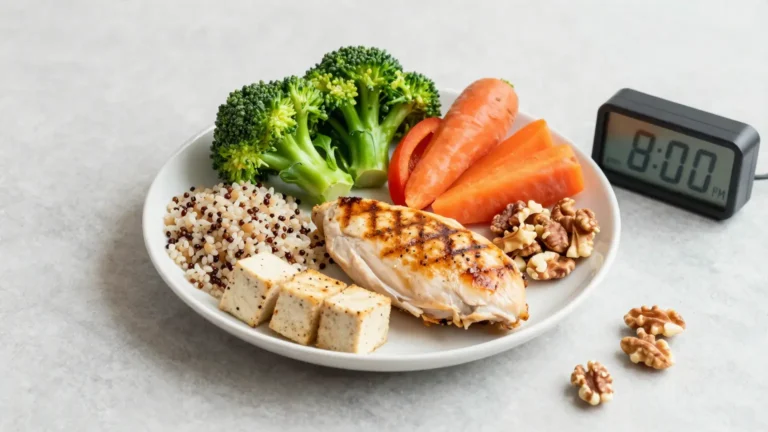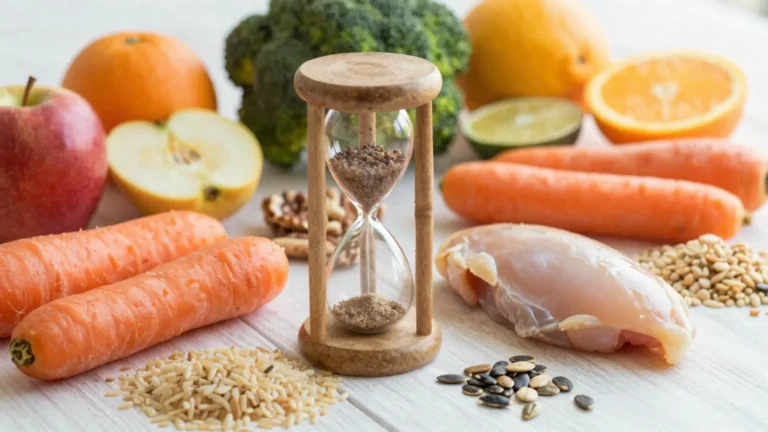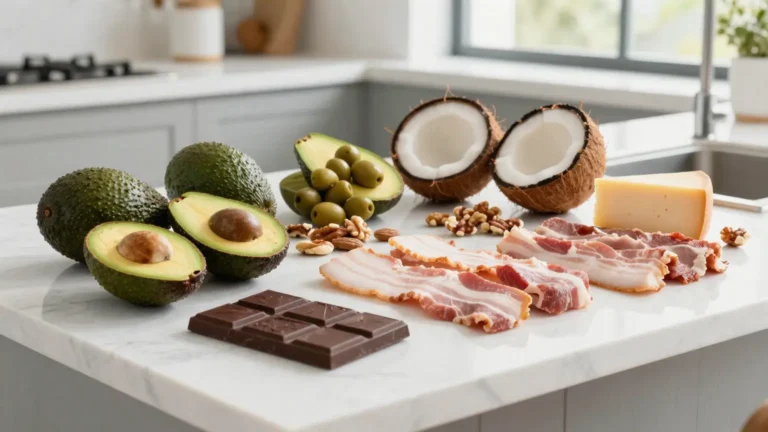What is a Mechanical Soft Diet?
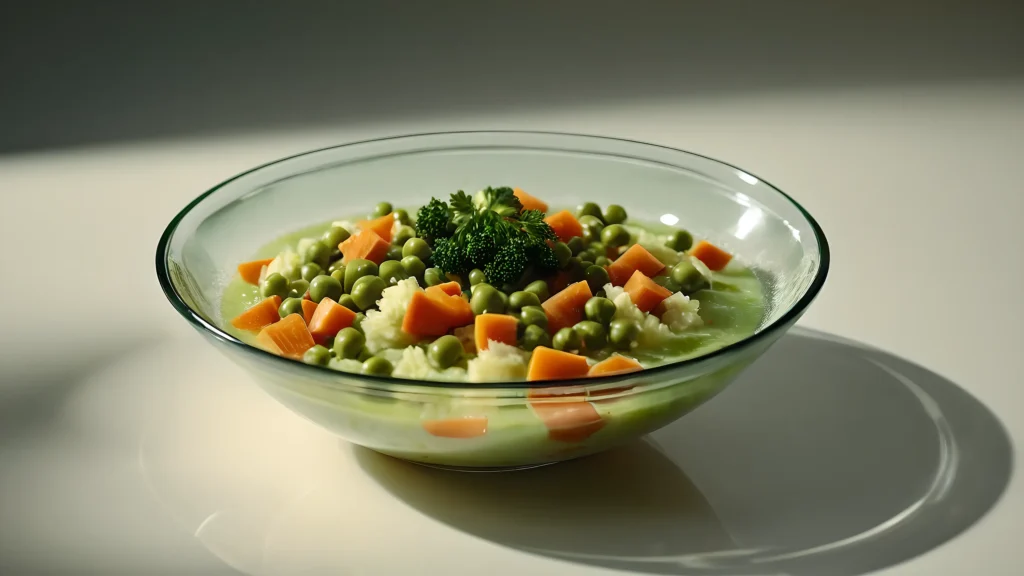
A Soft Diet, often referred to as a Mechanical Soft Diet or texture-modified diet (TMD), is designed for people who struggle with chewing or swallowing food due to conditions like dysphagia, tooth loss, dental issues, or post-surgical recovery in the mouth and throat area. This specialized diet focuses on making meals easier to consume without compromising safety and nutrition.
When preparing a Mechanical Soft Diet, foods are modified to be softer and more manageable. Ingredients might be mashed with a fork until they have a smooth texture; chopped finely enough that they don’t require much chewing; or soaked in liquid to soften them before eating. Examples of suitable items include cooked cereals, pureed fruits and vegetables, soups, and tender meats that are ground or minced for easier consumption.
However, certain foods should be avoided on this diet as they could cause further complications. Highly acidic foods might irritate the esophagus in individuals with acid reflux disease, while small, hard-to-chew items like seeds or nuts pose choking hazards and should be excluded. This means that many of the foods we commonly enjoy, such as crunchy vegetables or tough fruits, may not be part of a mechanical soft diet.
One important aspect to consider is the nutritional impact of adhering strictly to this type of diet. Since it often excludes palatable and nutrient-rich foods like crunchy vegetables, nuts, and some types of fruits, there’s a risk of malnutrition due to lower overall nutrition content compared to regular meals. It’s crucial for patients on a mechanical soft diet to work closely with healthcare providers and nutritionists to ensure they receive balanced nutrition despite the dietary limitations.
Interestingly, research indicates that prolonged use of soft-textured diets during developmental stages can influence feeding behaviors later in life. For instance, animals raised primarily on softer foods tend to show less efficient jaw movements when eating solid items compared to those accustomed to regular textures. This highlights the need for careful consideration before prescribing long-term mechanical soft diets, as they may affect long-term eating habits and nutritional intake.
By understanding these nuances, patients and healthcare providers can make informed decisions that balance safety with nutritional adequacy and long-term health outcomes.
When Should Someone Follow a Mechanical Soft Food Diet?
A mechanical soft food diet is prescribed for individuals who face challenges with chewing or swallowing due to specific health issues. These diets ensure safe eating habits by providing foods that are easy to manage without the risk of choking or other swallowing difficulties.
People should follow a mechanical soft food diet in the following scenarios:
- Chewing Difficulties: Individuals struggling with dental problems such as missing teeth, severe tooth decay, or conditions like periodontal disease.
- Swallowing Challenges: Those suffering from dysphagia, which can be caused by neurological disorders (like Parkinson’s disease), stroke, head and neck cancer, or radiation therapy that affects the throat muscles.
- Post-Surgical Recovery: Patients recovering from oral surgery, including dental implants, wisdom tooth extraction, tonsillectomy, or any other procedure involving the mouth, throat, or esophagus.
These diets include foods prepared in ways such as mashed, puréed, finely chopped, or softened with liquids to make them safe and easy to swallow. This approach helps reduce choking risks while ensuring that individuals can still enjoy a variety of flavors within dietary restrictions.
Nutritional Considerations and Health Implications
While mechanical soft diets are essential for immediate health concerns such as swallowing difficulties or post-surgical recovery, they may have long-term implications if not carefully managed. The primary nutritional drawbacks include reduced palatability and lower overall nutritional content compared to regular meals.
Health considerations extend beyond choking risks; for example:
- Acid Reflux: Certain foods might need to be avoided due to their potential to trigger acid reflux symptoms.
- Nutritional Deficiencies: Prolonged consumption of soft diets can lead to malnutrition because they often lack the variety and nutrient density found in regular meals.
To mitigate these risks, individuals on mechanical soft diets should work closely with dietitians or nutritionists who can help ensure balanced intake. This collaboration helps in identifying nutritious foods that meet both safety and nutritional needs while promoting long-term health benefits.
Ensuring Safety and Efficiency
Safety is paramount when prescribing a mechanical soft food diet, but efficiency and palatability are equally important to maintain adherence over time. Here are some tips for ensuring the diet remains effective:
- Consult Healthcare Providers: Regular consultations with healthcare professionals can help adjust dietary plans based on individual progress and evolving health needs.
- Monitor Choking Risks: Continuously assess choking risks and modify food textures as necessary to minimize these hazards.
- Introduce Texture Variations Gradually: As healing progresses or swallowing capabilities improve, gradually reintroducing harder textures under professional guidance helps in maintaining proper jaw function and feeding efficiency.
By balancing safety with nutritional adequacy, individuals on mechanical soft diets can enjoy their meals without compromising long-term health outcomes.
How Does a Puréed Diet Compare to a Regular Diet?
A puréed diet is specifically designed for individuals who struggle with chewing or swallowing because of conditions such as dysphagia, dental issues, or post-surgical recovery. This type of diet includes foods that are mashed, puréed, chopped finely, or softened in liquids to make them easier to manage without compromising safety and comfort.
Compared to a regular diet, puréed diets often come with certain health considerations. Foods that might trigger acid reflux or contain hard-to-chew items such as seeds are typically excluded. However, these restrictions can sometimes lead to nutritional deficiencies because the variety of foods available in a regular diet is usually wider, offering more diverse nutrients and better palatability.
Research indicates that prolonged consumption of softened foods during developmental stages can affect jaw growth and feeding behavior. For instance, studies on young animals have shown that those on soft diets for extended periods exhibit less efficient chewing patterns compared to their counterparts fed with harder textures. This suggests that regular diets, which involve more robust chewing activities, are crucial in promoting healthy jaw development and efficient food processing capabilities.
In summary, while puréed diets serve a critical function in ensuring safety and ease of consumption for those who cannot manage solid foods, they may not provide the same nutritional benefits or developmental advantages as regular diets. It’s important to carefully consider the long-term implications before prescribing these diets, especially during formative stages where proper jaw development and feeding behaviors are essential.
Which Foods Are Ideal for a Soft or Puree Diet?
Ideal foods for a soft or puree diet are those that can be easily swallowed without requiring much chewing. Here’s a breakdown of suitable options:
- Vegetables: Cook vegetables thoroughly until they become soft, then blend them into a smooth purée. Examples include carrots, peas, and mashed potatoes.
- Fruits: Choose fruits that naturally soften when ripe or puree harder ones for easier consumption. Applesauce, banana mash, and avocado puree are great choices.
- Proteins: Opt for lean proteins like ground turkey, chicken breast without skin, and fish such as cod or tilapia. These should be cooked until tender and blended smoothly if necessary.
- Grains and Starches: Cooked cereals, oatmeal, mashed potatoes, and well-cooked pasta work well. Ensure they are soft enough to eat with minimal effort.
These foods should be prepared without added oils, sugars, or spices that could irritate the throat or stomach. They need to pass a fork-mash test – meaning they spread easily like peanut butter with no chunks remaining.
Are Desserts Suitable on a Mechanical Soft Food Plan?
When considering desserts within a mechanical soft food plan, it’s essential to balance taste and nutritional needs. Desserts can be adapted to fit the guidelines of these special diets without compromising their intended health benefits. Here are some tips for incorporating desserts into your meal plan:
- Choose Wisely: Opt for desserts that don’t require hard chewing or have a high risk of choking, such as soft puddings, custards, and ice creams.
- Modify Recipes: Use blenders to create smooth textures from fruits, nuts, and seeds. This technique ensures the dessert remains easy to swallow while retaining flavor.
Incorporating suitable desserts can make a mechanical soft food plan more enjoyable and sustainable, promoting better adherence to the diet over time.
Can Anyone Eat Ice Cream on a Soft Diet?
Ice cream can be included in a mechanical soft diet if it adheres to specific guidelines designed to ensure safety and ease of consumption. These guidelines are outlined by the IDDSI framework, which categorizes foods based on their texture consistency.
Key Points to Consider
- Texture: Ice cream should have a smooth and creamy texture without chunks or hard inclusions that could pose choking hazards.
- Nutritional Value: While ice cream can provide calories and fat, it often lacks essential nutrients. Therefore, it’s important to balance consumption with other nutritious foods.
- Health Considerations: Individuals who are sensitive to acid reflux or lactose intolerance should avoid certain flavors if they trigger discomfort.
Practical Tips
- Choose varieties of ice cream that are naturally smooth without hard inclusions like nuts or seeds.
- Opt for soft, creamy ice creams rather than those with a firmer texture that may require more effort to swallow.
- Consider homemade versions where you can control ingredients and ensure the consistency is right.
By selecting appropriate types of ice cream and incorporating them wisely, individuals on mechanical soft diets can enjoy this dessert safely while adhering to their dietary restrictions.
Are There Restrictions on Certain Foods Like Alcohol and Spices?
When following a mechanical soft diet, certain restrictions apply to specific types of food items like alcohol and spices. These limitations are put in place primarily to ensure safety and ease of consumption while minimizing the risk of discomfort or health issues.
- Alcohol: Although alcohol is not inherently restricted due to its texture, it can pose risks for individuals with conditions necessitating a soft diet. Alcohol might exacerbate symptoms such as acid reflux or dysphagia, making it advisable to avoid or consume in moderation after consulting healthcare providers.
- Spices and Seasonings: Spicy foods are generally discouraged because they can irritate the throat and stomach lining. Individuals on mechanical soft diets often have sensitivities that make strong spices uncomfortable or even harmful. Opting for mild seasonings instead helps maintain comfort while enhancing flavor without causing irritation.
These restrictions help prevent choking hazards, digestive issues, and other health concerns associated with swallowing difficulties. The goal is to create a balanced diet plan that ensures both safety and nutritional adequacy, allowing individuals to enjoy their meals comfortably and safely.
In the context of dietary choices, research has shown that even in young animals, prolonged consumption of soft diets can alter feeding behaviors. For example, piglets raised on exclusively softened food exhibit less efficient jaw movements when later introduced to solid foods compared to those fed regular textures from an early age. This underscores the importance of balancing safety measures with nutritional and developmental needs during critical stages.
What Kinds of Fruits Can You Have on This Diet?
On a mechanical soft diet, incorporating fruits is essential as they provide important vitamins, minerals, and antioxidants. Here’s how you can include various types of fruit while adhering to dietary guidelines:
- Soft Fruits: Opt for fruits that naturally have a smooth consistency such as bananas or avocados. These fruits are easy to mash and blend, ensuring they meet the IDDSI criteria.
- Juicy Fruits: Choose fruits with high water content like peaches, plums, and nectarines. Blending these fruits into smoothies or juices makes them soft enough for safe consumption without requiring much chewing.
- Berries: Berries are rich in antioxidants and can be mashed or puréed to maintain their nutritional value while making them easier to eat. For example, strawberries and blueberries offer a delightful taste when blended into a puree.
Avoid fruits with tough skins and seeds such as whole grapes or cherries with pits since they pose choking risks or difficulty swallowing. Instead, focus on varieties that naturally blend well or can be peeled and processed into smooth textures.
Including fruits in your mechanical soft diet not only enhances palatability but also ensures you receive essential vitamins and minerals crucial for overall health.
Applesauce is a popular choice for individuals on a soft food diet because it retains the nutritional benefits of apples, including dietary fiber that aids digestion, while being easy to eat.
Can I Eat Grains and Starches While Following a Soft Diet?
The answer is yes, but with specific modifications. When following a mechanical soft diet, grains and starches can be included if prepared in ways that meet the required consistency guidelines. Here are some points to consider:
- Modified Preparation: Grains such as oatmeal or rice can be cooked until very soft and easy to swallow. Pasta should also be thoroughly cooked to achieve a soft texture.
- Nutritional Benefits: Opt for whole grains whenever possible, as they provide essential fiber and nutrients that help prevent malnutrition often associated with softer diets.
- Health Considerations: Be cautious of foods like white rice or certain cereals, which might lack the nutritional density found in their whole grain counterparts. Additionally, individuals with acid reflux should avoid starchy foods known to trigger symptoms, such as fried potatoes or creamy pasta dishes.
Incorporating grains and starches can enhance the variety and palatability of a soft diet, making it easier to adhere to long-term while still ensuring nutritional adequacy. By preparing these items according to IDDSI guidelines, you can safely enjoy them without risking choking hazards or other swallowing issues.
Whole grain oats are not only nutritious but also have high digestibility when cooked thoroughly. This makes them an excellent choice for a soft diet as they retain their nutritional value while meeting the required consistency standards.
A mechanical soft food diet is designed specifically for individuals who face challenges with chewing or swallowing. Common reasons for needing such a diet include conditions like dysphagia (difficulty swallowing), loss of teeth, dental issues, and post-surgical recovery. This type of diet includes foods that are mashed, puréed, finely chopped, or softened in liquids, making them easier to consume safely.
The IDDSI framework helps standardize these diets by categorizing food consistencies based on safety and ease of consumption for people with swallowing difficulties. However, while soft foods are designed to be easier to eat, they can sometimes restrict certain nutritious items due to health considerations such as acid reflux or the inclusion of hard-to-chew elements like seeds.
Nutritionally, mechanical soft diets may pose a risk if not carefully planned. They might lead to malnutrition because these diets often contain less variety and lower nutritional content compared to regular meals, which can affect palatability and long-term health outcomes. It’s crucial for individuals on such diets to work closely with healthcare professionals to ensure they receive all necessary nutrients.
Interestingly, research also suggests that prolonged use of soft-texture diets during developmental stages can impact jaw movements and feeding behaviors in young animals like piglets. Animals fed softer foods tend to have less efficient chewing patterns when transitioning back to solid food compared to those on regular diets. This finding highlights the importance of balancing safety with nutritional needs when prescribing mechanical soft food diets, as improper management could lead to long-term health issues beyond immediate swallowing concerns.
In summary, while mechanical soft diets provide necessary relief for individuals facing specific eating challenges, they require careful management to prevent long-term health impacts on nutrition and feeding behaviors. By understanding the guidelines and working closely with healthcare providers, individuals can navigate these dietary restrictions more effectively, ensuring both safety and nutritional adequacy.
Frequently Asked Questions (FAQ)
- What are the benefits of following a soft food diet?
The main benefit is that it helps people who have difficulty chewing or swallowing to consume necessary nutrients easily. It can also aid in recovery after certain surgeries. - How do I transition back to regular foods from a soft diet?
It’s important to consult with your healthcare provider about when and how to start introducing harder-to-chew foods as you recover, ensuring that the transition is safe and gradual. - Are there any tips for meal planning on a soft food diet?
Focus on blending or mashing foods until they reach a smooth consistency. Include a variety of nutrients from different food groups like fruits, vegetables, lean proteins, and healthy fats in your meals. - Can I still enjoy soups while on a mechanical soft food diet?
Yes, soups can be great as long as the ingredients are finely blended or pureed to ensure they’re easy to swallow without causing any discomfort or obstruction. - Are there specific recipes available for people following this diet?
There are many resources online that offer detailed recipes specifically designed for a mechanical soft food diet. These include simple ideas like smoothies, mashed potatoes, and pureed soups. - How do I make sure I get enough fiber on a soft food diet?
Choose high-fiber foods that can be easily blended or pureed such as bananas, applesauce, cooked carrots, and oatmeal to maintain good digestive health. - Can I eat pasta while following this diet?
Pasta can be included if it’s well-cooked until very soft. It should then be mashed thoroughly with a fork or blended into a smooth consistency before eating. - Are there any common mistakes people make when starting a mechanical soft food plan?
One mistake is not blending foods sufficiently, which can lead to choking hazards. Another is underestimating the nutritional value of soft and pureed meals. - How long does someone typically stay on a soft food diet?
The duration varies depending on individual health conditions and recovery progress. Some might be on it for just a few days post-surgery while others may need to follow it longer due to ongoing medical issues. - What are some alternatives to sugar for sweetening foods on this diet?
You can use natural sweeteners like honey, maple syrup, or pureed fruits instead of refined sugars. These alternatives not only add sweetness but also offer additional nutrients and flavors.
